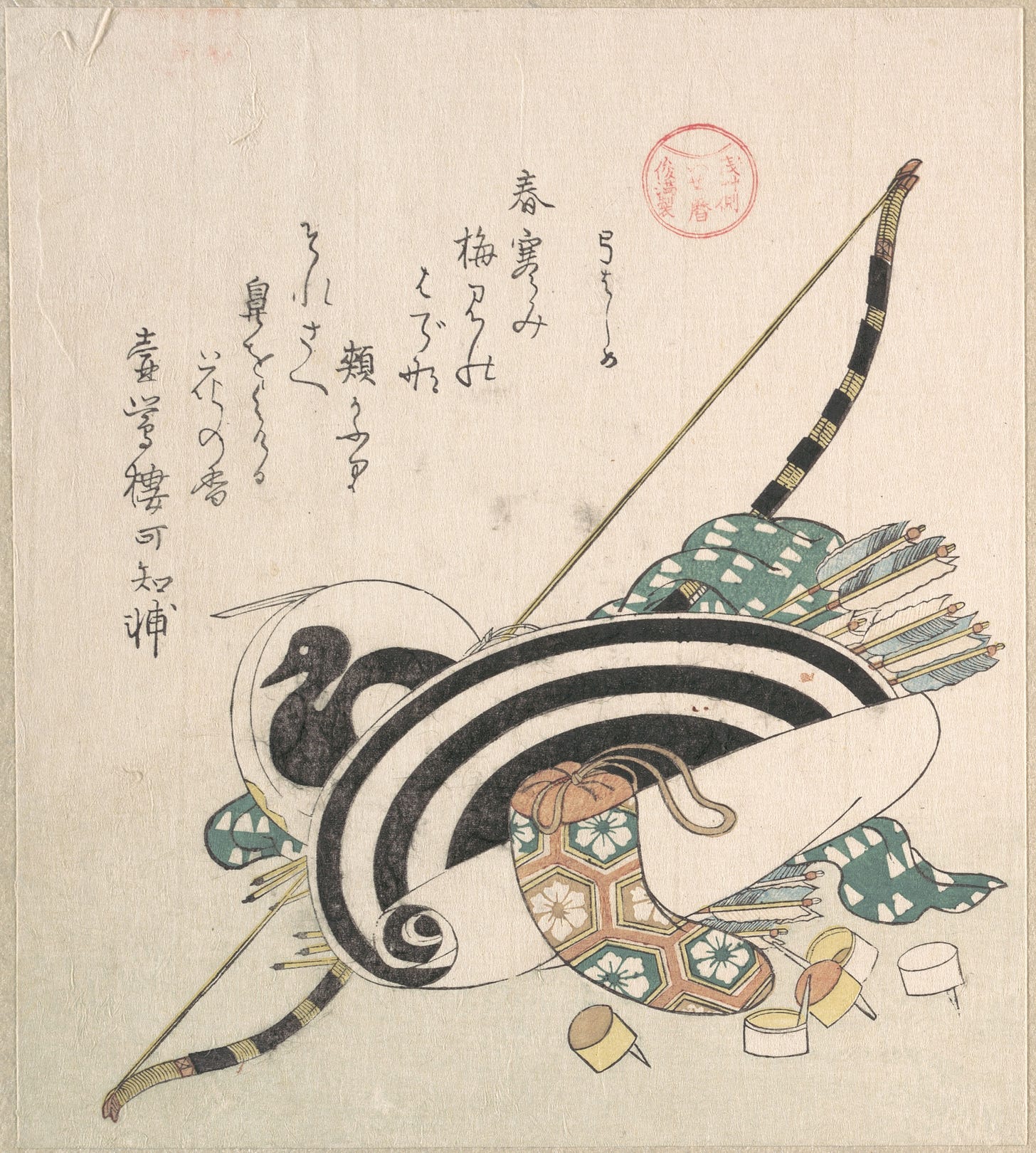Hooked on the Highs and Lows: A New Look at Emotional Chaos
You’re not broken. You’ve just been surviving intensity for too long.
“The calm man, having known Brahman, becomes calm, restrained, withdrawn, patient, and collected.” — Katha Upanishad
Hi, I’m Ana. I’m a psychologist and writer exploring the inner landscapes of emotional life, especially the moments that feel messy, uncertain, or quietly transformative.
If you’re new here, welcome. Field Notes from a Psychologist’s Life is where I share poetic reflections, grounded psychology, and stories for people navigating change.
The Emotional Loop We Don’t Choose
Have you ever noticed how certain emotional patterns feel… strangely familiar?
You don’t want to snap. You don’t want to spiral, overthink, or go numb. But it happens, again and again.
Almost like a reflex.
Almost like… a fix.
As if your system is returning to a well-worn path, one it didn’t consciously choose, but has walked so many times it now feels automatic.
What if emotional dysregulation isn’t just something we “struggle with,”
but something the nervous system has learned to depend on?
Not because you’re broken.
But because your system got used to the rush.
To the sharpness. The stimulation. The familiarity of intensity.
Sometimes, chaos becomes comfort, not because it feels good,
but because it feels known.
The Pull of the Emotional Tide
Emotions are often described as waves.
And for centuries, we’ve turned to water as a metaphor for the inner world, with good reason.
Water is soft. Fluid. Life-giving.
But when stirred, contained, or forced, it becomes overwhelming.
Even destructive.
We all know the feeling.
The small ripple of irritation that grows into frustration.
The sudden undertow of grief.
The anger that crashes, then pulls away,
leaving behind guilt, or shame, or emptiness.
It can feel like something took over.
And maybe, in a way, something did:
An old pattern.
A practiced reaction.
A habit your body memorised.
In psychology, we know the nervous system is shaped by repetition.
The more often an emotion is triggered — anxiety, rage, sadness, shame —
the more easily it returns.
It’s not just random. It’s rehearsed.
The body learns the path of intensity. The mind follows.
And over time, this can start to resemble addiction.
There are triggers.
There are cravings.
There’s the high: the spike of intensity, the emotional release.
And there’s the crash: the collapse, the guilt, the numbness.
Just like with substances or compulsions, emotional intensity becomes familiar, even comforting.
When the Storm Becomes a Habit
Most emotional storms don’t arrive out of nowhere.
They build. Slowly. Predictably.
There’s the rising tide: tension, exhaustion, overstimulation.
There’s the invisible cue: a text not answered, a glance misread,
a small disappointment that tips the scale.
And then: the flood.
An outburst.
A shutdown.
A rush of thoughts and feelings too big to hold.
And here’s what matters most:
The more often this happens, the more likely it is to happen again.
The brain is efficient.
What we rehearse, we remember.
What we repeat, we reinforce.
In therapy, I often speak of emotional “muscles.”
We don’t just build the calm muscle.
We build the worry muscle.
The rage muscle.
The self-blame muscle.
We strengthen whatever we practice, even if we don’t mean to.
Think of the nervous system like a river carving its way through the land.
The more it flows in a certain direction, the deeper the groove becomes.
The more we react in a certain way, the easier it becomes to repeat,
and the harder it becomes to choose something different.
Some people develop a rage groove.
Others, a spiral of shame.
Others still, a loop of emotional caretaking and resentment.
None of these patterns form on purpose.
But they become ingrained.
Practiced.
Automatic.
And then, when things finally quiet down,
it’s common to feel a strange discomfort.
The stillness after the storm can feel unfamiliar.
Empty. Flat. Even threatening.
“If it’s this quiet, something bad must be coming…”
Sound familiar?
That’s not irrational.
It’s your system responding to what it has practiced.
Why Stillness Feels So Strange
After the storm, there’s often a silence.
Not the peaceful kind — not yet.
But a kind of stunned quiet.
A low tide.
The moment when the world holds its breath.
And here’s the paradox:
For some of us, that stillness feels unbearable.
It can feel empty.
Flat.
Boring.
Even dangerous.
So we stay on guard.
We stir the waters again.
We go looking for the next wave —
not because we want to suffer,
but because we don’t know how to be without the swell.
Let’s name it clearly.
This pattern, the emotional highs and lows, the familiar triggers, the withdrawal-like crashes, can begin to behave like an addiction to intensity.
It doesn’t mean you’re choosing chaos.
It means your body has learned that chaos is familiar.
Predictable.
Strangely comforting, even when it’s exhausting.
The nervous system becomes hooked on stimulation.
Just like someone might reach for caffeine, conflict, or overthinking
when the quiet feels too unfamiliar.
And yet...
In many Eastern traditions, there’s a quiet reverence for the space between things.
The pause between breaths.
The silence after the bell.
The moment before the arrow is released.
Where modern life rewards reactivity,
these traditions remind us of the wisdom in stillness.
Not as a place of passivity,
but as a place of power.
Of space.
Of awareness.
Of choice.
Toward a New Pattern
The good news? Patterns can be rewired.
Not overnight.
Not with one insight.
But with practice.
With compassion.
With support.
You are not dramatic.
You are not broken.
You are not too much.
You may simply have a nervous system that has gotten used to the rhythm of intensity.
And like any rhythm, it can be rewoven.
We begin with noticing.
With asking gentle questions instead of shaming ones.
With understanding our cues, our cycles, our cravings for intensity,
not to punish them, but to repattern them.
Therapy, mindfulness, and nervous system work can help us pause.
Not to control emotions, but to meet them differently.
To stay.
To soften.
To allow stillness to be safe again.
In therapy, we often call this nervous system regulation.
It means building awareness of your cues.
Creating space between feeling and reacting.
And gently introducing new responses, even small ones, into the places where the old ones used to live.
I like to talk about strengthening emotional muscles.
You may have built your anxiety muscle.
Your control muscle.
Your overthinking muscle.
But you can also build the calm muscle.
The trust muscle.
The pause muscle.
And like any physical muscle, they grow slowly.
Through repetition, not perfection.
If You’re in Therapy Right Now... or Working Through This
Here’s what this might mean for you:
Emotional reactivity isn’t just a problem to fix.
It may be a pattern your body learned to survive.
What feels like you might actually be a trained response, one that made sense at the time.
And the work ahead isn’t just about insight.
It’s about daily practice.
We don’t unlearn emotional addiction by force.
We unlearn it by choosing stillness, especially when it feels unfamiliar.
By noticing when we’re triggered, and offering ourselves a pause instead of a spiral.
This is what therapy, mindfulness, and nervous system work aim to support:
Not control.
Not suppression.
But new pathways for feeling, responding, and resting.
To Reflect
What if calm isn’t just a mood, or a state,
but a skill?
Not something we’re born with,
but something we practice.
Like sobriety.
Like trust.
Like love.
Let’s begin again.
Not with force.
Not with shame.
Not with urgency.
But with a breath.
A pause.
A quiet commitment to stay with ourselves,
even when the waves rise again.
✨ Which part of your emotional pattern feels the most familiar, and the most ready for change?
I’d love to hear in the comments.
If you’d like to keep reading about calm and nervous system healing, here’s another piece you might enjoy:
Is Calm the New Ambition?
What if calm weren’t something we earned after burnout, but something we practiced into our days — like breath?










Ana, loved it! Your description of emotional dysregulation as a learned response is really interesting. It raises an important question: How can we better become aware and begin to unlearn these patterns in our everyday lives? In my line of work (working with narrative and storytelling), I've seen it in community projects in slums - imagining new stories, new narratives, either shared or individual - how much a simple shift of focus, can create the first step to change, because of seeing it from a new perspective. And when it becomes embodied emotional experience, it really turns the tide for many. Its a bit different, but had to think about this, when reading your article. On a personal note: The parallel you draw between addiction to intensity and our emotional responses really got me thinking. Do you think there are societal factors that exacerbate this addiction, especially in our fast-paced, information-saturated world?